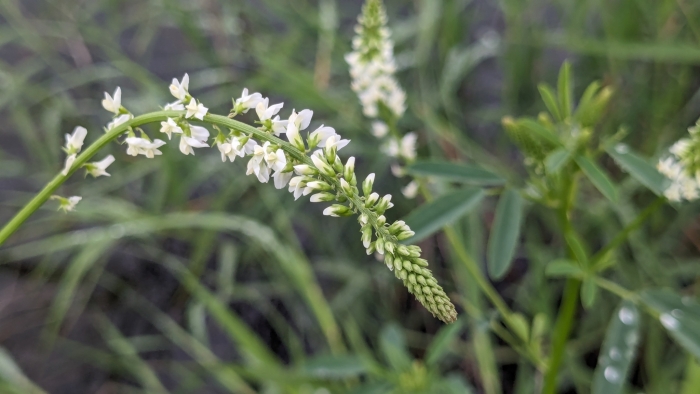Sweet Yellow Clover
(Melilotus officinalis)
Sweet Yellow Clover (Melilotus officinalis)
/
/

© Joseph Aubert
CC BY 4.0
Image By:
© Joseph Aubert
Recorded By:
Copyright:
CC BY 4.0
Copyright Notice:
Photo by: © Joseph Aubert | License Type: CC BY 4.0 | License URL: http://creativecommons.org/licenses/by/4.0/ | Uploader: cynodon | Publisher: iNaturalist |



















Estimated Native Range
Summary
Melilotus officinalis, commonly known as sweet yellow clover or common melilot, is an annual or biennial herb native to Eurasia. It has been introduced to North America, Africa, and Australia, where it often colonizes disturbed sites, including fields and roadsides. Sweet yellow clover typically grows up to 71 inches tall and has a deep taproot. The plant features small, fragrant yellow flowers arranged in elongated clusters that bloom in spring and summer, providing forage for bees and other pollinators.
Sweet yellow clover is valued for its ability to fix nitrogen in the soil, making it useful in agricultural settings as a cover crop or green manure. It is also planted for erosion control and can be found in wildflower mixes for meadows. In cultivation, it prefers calcareous, loamy, and clay soils with a pH above 6.5. It is drought-tolerant but does not tolerate standing water or acidic soils. While it can be beneficial in its native range, Melilotus officinalis is considered invasive in some regions outside its native habitat, so gardeners should check local regulations before planting.CC BY-SA 4.0
Sweet yellow clover is valued for its ability to fix nitrogen in the soil, making it useful in agricultural settings as a cover crop or green manure. It is also planted for erosion control and can be found in wildflower mixes for meadows. In cultivation, it prefers calcareous, loamy, and clay soils with a pH above 6.5. It is drought-tolerant but does not tolerate standing water or acidic soils. While it can be beneficial in its native range, Melilotus officinalis is considered invasive in some regions outside its native habitat, so gardeners should check local regulations before planting.CC BY-SA 4.0
Plant Description
- Plant Type: Herb
- Height: 1-7 feet
- Width: 3.3-3 feet
- Growth Rate: Rapid
- Flower Color: Yellow
- Flowering Season: Summer, Fall
- Leaf Retention: Deciduous
Growth Requirements
- Sun: Full Sun, Part Shade
- Water: Medium
- Drainage: Medium, Slow
Common Uses
Bee Garden, Butterfly Garden, Erosion Control, Low Maintenance
Natural Habitat
Native to Eurasia and often found in disturbed sites such as fields and roadsides
Other Names
Common Names: Yellow Sweet Clover, Cornilla Real, Field Melilot, Ribbed Melilot, Sweetclover, Yellow Melilot
Scientific Names: , Melilotus officinalis, Brachylobus officinalis, Medicago officinalis, Melilotus alba, Melilotus armenus, Melilotus arvensis, Melilotus arvensis var. albus, Melilotus arvensis var. grandiflorus, Melilotus arvensis var. maximus
GBIF Accepted Name: